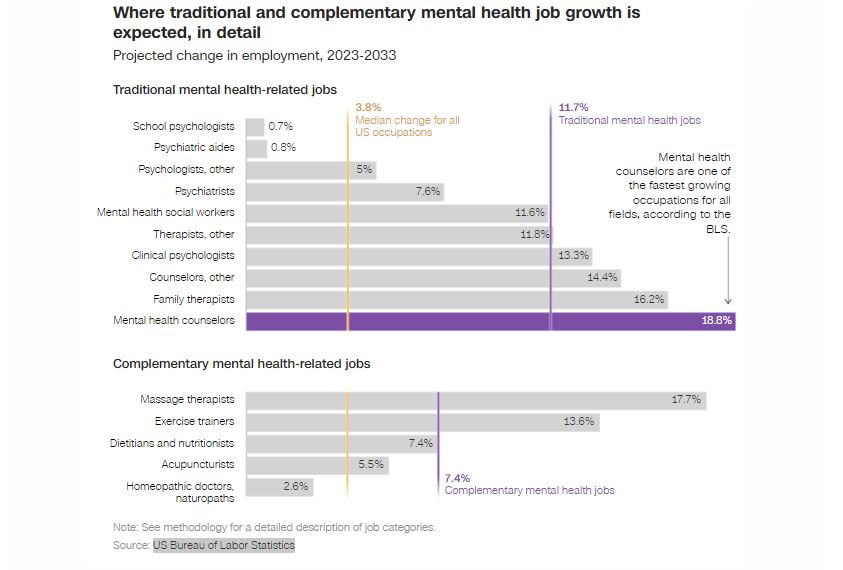The mental health landscape in the U.S. is undergoing a significant shift, with demand for mental health counselors, including substance abuse and behavioral disorder counselors, expected to rise sharply over the next decade. Projections from the Bureau of Labor Statistics (BLS) estimate a 19% growth in these roles, expanding the workforce from 450,000 in 2023 to 534,000 by 2033. This makes mental health counselors one of the top 20 fastest-growing occupations in the country.

These professionals help individuals facing challenges such as anxiety, addiction, and stress. Other mental health-related jobs, such as marriage and family therapists, are also set for significant growth, with a projected 16% rise by 2033. Additionally, the BLS category “counselors, all other” — a catch-all group that includes roles like sexual assault and grief counselors — is forecast to grow by 14%.
Rising Demand for Mental Health Services
The anticipated growth in mental health roles is driven by a combination of factors. Decreasing stigma around mental health treatment has led more Americans to seek help, while increasing societal stressors like political divisiveness, economic uncertainties, and ongoing crises such as gun violence and climate change have amplified the need for mental health support.
Dr. Traci Cipriano, a clinical psychologist and assistant clinical professor at Yale School of Medicine, emphasized that these issues create a feeling of being “threatened,” which contributes to rising stress, depression, and anxiety. “Stress itself can be managed through mental health treatment, but if you don’t manage it, it can lead to depression and anxiety,” Cipriano told CNN.
Holistic Approaches on the Rise
Beyond traditional therapy, more Americans are turning to holistic practices to manage their mental health. Acupuncturists, fitness trainers, and massage therapists are seeing growth, with massage therapy alone projected to increase by nearly 18% by 2033. More than half of massage clients cited stress relief as their primary motivation for seeking treatment, according to a survey by the American Massage Therapy Association.
Barriers to Access Remain a Challenge
While the demand for mental health services continues to rise, access remains a significant barrier, particularly in rural areas. According to a 2021 analysis by USA Facts, approximately 122 million Americans live in regions with a scarcity of mental health professionals. States like Wyoming and Utah are particularly affected, leaving many without essential support.
Even as more adults seek treatment, millions still struggle without help, exacerbating what many experts are calling a national mental health crisis. With young people reporting deteriorating well-being during and after the pandemic, the need for an expanded and accessible mental health workforce has never been more urgent.






